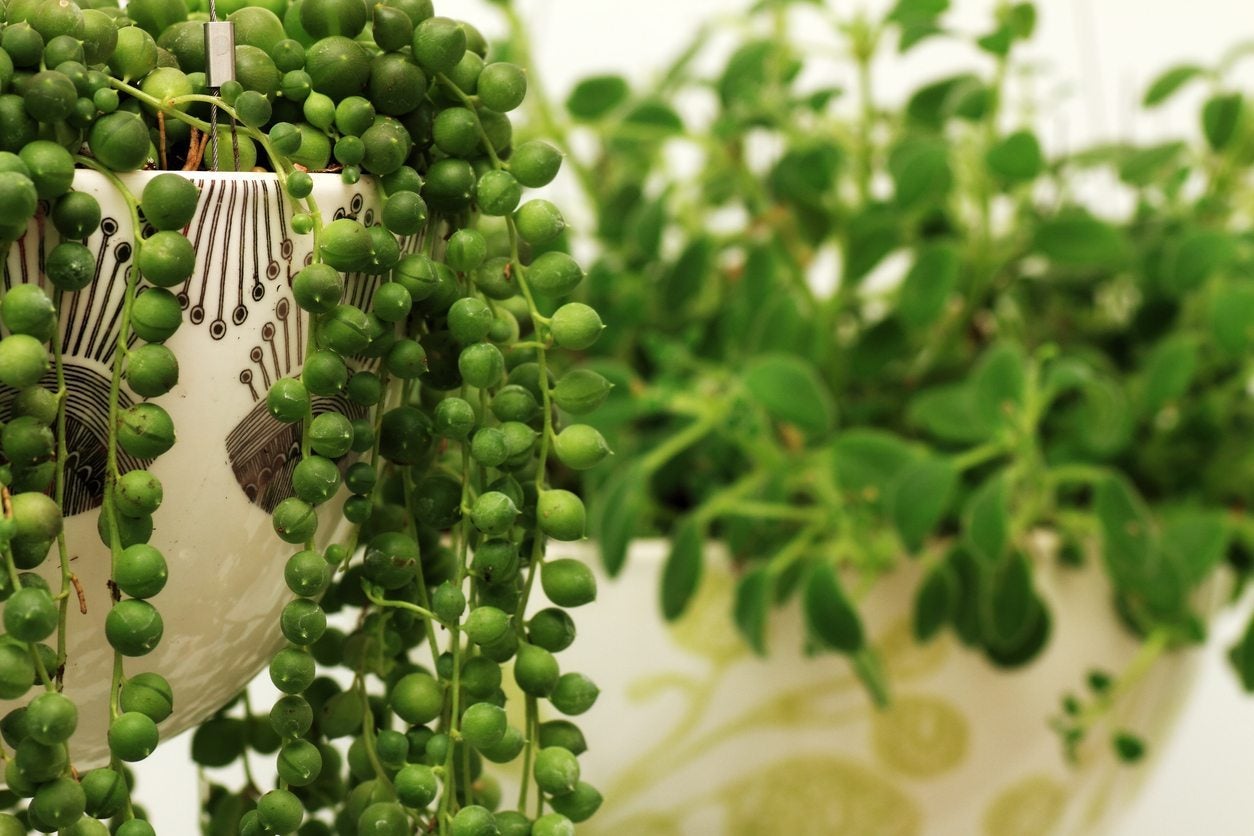String Of Pearls Propagation : Tips For Rooting String Of Pearls Cuttings


The name says it all. String of pearls actually looks more like a string of green peas, but the moniker is still apt. This small succulent is a common houseplant in the Aster family. Succulents are easy to grow from cuttings and string of pearls is no exception. String of pearls plant cuttings will root readily, provided they have a bit of preparation and the correct medium. The trick is in knowing how to propagate a string of pearls plant, including when to take the cutting and how to care for the new plant.
Rooting String of Pearls Plant Cuttings
If you are lucky enough to have a string of pearls plant or know someone who does, it is easy to make more of this delightful succulent. Taking string of pearls cuttings is the easiest and fastest way to multiply your stock of this whimsical succulent. No matter if you are a pro or a novice, cuttings of succulents are practically foolproof ways of string of pearls propagation. In order to prevent most succulent cuttings from rotting before they can root, you need to let them rest before you plant, but this is not necessary when rooting string of pearls plant cuttings. Succulents take a long time to grow from seed and take on the appearance of adult plants. Usually, propagation is through cuttings or division of the pups or offsets. The fastest method of string of pearls propagation is from cuttings. Clean, sharp implements are necessary for taking these cuttings and reduces damage to the plant as well as the introduction of pathogens to both the parent and the cutting. Take cuttings when plants are actively growing, ideally from spring until late summer. String of pearls produces a thick, dangling web of slender stems adorned with tiny green balls. These are actually the plant's leaves. Many gardeners like to prune the ends of the stems when they get too long. These trimmings can make ideal cuttings for propagation.
How to Propagate String of Pearls Plant
To start new plants, remove 4 inches (10 cm.) of terminal plant material. Cut in between the pea-like leaves to make a cutting that is now about 2 inches (5 cm.) long. Make sure the stem is green, unblemished, and not desiccated or otherwise damaged. Use a good succulent potting mix or make your own with a 50/50 mixture of compost and horticultural sand. Moisten this lightly but thoroughly. You can insert the cutting by removing the bottom leaves and covering the cleared end in soil or simply coil the cutting on top of the soil, lightly pressing it into contact with the growing medium. Rooting string of pearls can take several months. During this time keep the container in bright, indirect light in a warm location. Mist the container every few days to keep the top of the soil where the cutting is in contact lightly moist. Be careful not to overwater, which can cause the end of the cutting to rot. After about a month, reduce watering to just when the top of the soil feels dry. After six months, during the growing season, feed the plant with liquid succulent plant food or a balanced all-purpose houseplant food of 12:12:12, diluted to half strength every other week. Suspend feeding during the dormant months. In time, your cuttings will send out new stems and fill in. You can repeat the propagation process over and over and create as many of these charming plants as you can fit in your house or your friends and family can accommodate.
Sign up for the Gardening Know How newsletter today and receive a free copy of our e-book "How to Grow Delicious Tomatoes".

Bonnie Grant is a professional landscaper with a Certification in Urban Gardening. She has been gardening and writing for 15 years. A former professional chef, she has a passion for edible landscaping.